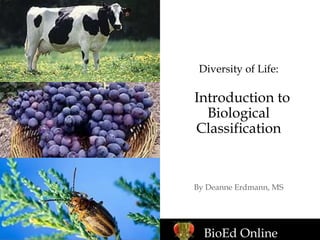Recommended
More Related Content
Similar to a.ppt
Similar to a.ppt (20)
Exam 2 Study Guide. All questions will be over these concepts, voc.docx

Exam 2 Study Guide. All questions will be over these concepts, voc.docx
Ap Chapter 26 Evolutionary History Of Biological Diversity

Ap Chapter 26 Evolutionary History Of Biological Diversity
bacterial systematics in the diversity of bacteria

bacterial systematics in the diversity of bacteria
Biology Ch. 17.ppt. Materi pokok, bahan pembelajaran

Biology Ch. 17.ppt. Materi pokok, bahan pembelajaran
More from jayanethaji
More from jayanethaji (14)
CBSE-Class-12-Chem-Notes-Question-Bank-The-d-and-f-Block-Elements-PDF.pdf

CBSE-Class-12-Chem-Notes-Question-Bank-The-d-and-f-Block-Elements-PDF.pdf
Hsslive-xii-chem-slide-ch-4. Chemical Kinetics.pdf

Hsslive-xii-chem-slide-ch-4. Chemical Kinetics.pdf
Hsslive-xii-chem0ch-11-Alcohols,Phenols and Ethers-slides-suvitha.pdf

Hsslive-xii-chem0ch-11-Alcohols,Phenols and Ethers-slides-suvitha.pdf
Hsslive-xii-chemistry-Haloalkane and Haloarenes.pdf

Hsslive-xii-chemistry-Haloalkane and Haloarenes.pdf
Recently uploaded
APM Welcome
Tuesday 30 April 2024
APM North West Network Conference, Synergies Across Sectors
Presented by:
Professor Adam Boddison OBE, Chief Executive Officer, APM
Conference overview:
https://www.apm.org.uk/community/apm-north-west-branch-conference/
Content description:
APM welcome from CEO
The main conference objective was to promote the Project Management profession with interaction between project practitioners, APM Corporate members, current project management students, academia and all who have an interest in projects.APM Welcome, APM North West Network Conference, Synergies Across Sectors

APM Welcome, APM North West Network Conference, Synergies Across SectorsAssociation for Project Management
This presentation was provided by William Mattingly of the Smithsonian Institution, during the third segment of the NISO training series "AI & Prompt Design." Session Three: Beginning Conversations, was held on April 18, 2024.Mattingly "AI & Prompt Design: The Basics of Prompt Design"

Mattingly "AI & Prompt Design: The Basics of Prompt Design"National Information Standards Organization (NISO)
Recently uploaded (20)
Unit-V; Pricing (Pharma Marketing Management).pptx

Unit-V; Pricing (Pharma Marketing Management).pptx
Mixin Classes in Odoo 17 How to Extend Models Using Mixin Classes

Mixin Classes in Odoo 17 How to Extend Models Using Mixin Classes
APM Welcome, APM North West Network Conference, Synergies Across Sectors

APM Welcome, APM North West Network Conference, Synergies Across Sectors
Mattingly "AI & Prompt Design: The Basics of Prompt Design"

Mattingly "AI & Prompt Design: The Basics of Prompt Design"
Web & Social Media Analytics Previous Year Question Paper.pdf

Web & Social Media Analytics Previous Year Question Paper.pdf
This PowerPoint helps students to consider the concept of infinity.

This PowerPoint helps students to consider the concept of infinity.
SECOND SEMESTER TOPIC COVERAGE SY 2023-2024 Trends, Networks, and Critical Th...

SECOND SEMESTER TOPIC COVERAGE SY 2023-2024 Trends, Networks, and Critical Th...
a.ppt
- 1. Diversity of Life: Introduction to Biological Classification By Deanne Erdmann, MS BioEd Online
- 2. Why Do We Classify Organisms? Biologists group organisms to represent similarities and proposed relationships. Classification systems change with expanding knowledge about new and well-known organisms. Tacitus bellus BioEd Online
- 3. Leucaena leucocephala Lead tree Classification Binomial Nomenclature Two part name (Genus, species) Hierarchical Classification Seven Taxonomic Catagroies Systematics Study of the evolution of biological diversity BioEd Online
- 4. Carolus von Linnaeus (1707-1778) Swedish scientist who laid the foundation for modern taxonomy Binomial Nomenclature Carolus von Linnaeus Two-word naming system Genus Noun, Capitalized, Underlined or Italicized Species Descriptive, Lower Case, Underlined or Italicized BioEd Online
- 5. Hierarchical Classification Taxonomic categories Kingdom King Phylum Philip Class Came Order Over Family For Genus Green Species Soup BioEd Online
- 6. Kingdoms and Domains Bacteria Archaea Eukarya Bacteria Archaea Protista Plantae Fungi Animalia Monera Protista Plantae Fungi Animalia The three-domain system The six-kingdom system The traditional five-kingdom system BioEd Online
- 7. Systematics: Evolutionary Classification of Organisms Systematics is the study of the evolution of biological diversity, and combines data from the following areas. Fossil record Comparative homologies Cladistics Comparative sequencing of DNA/RNA among organisms Molecular clocks BioEd Online
- 8. Taxonomic Diagrams Mammals Turtles Lizards and Snakes Crocodiles Birds Mammals Turtles Lizards and Snakes Crocodiles Birds Cladogram Phylogenetic Tree BioEd Online
- 9. Dichotomous Keys Identify Organisms Dichotomous keys versus evolutionary classification Dichotomous keys contain pairs of contrasting descriptions. After each description, the key directs the user to another pair of descriptions or identifies the organism. Example: 1. a) Is the leaf simple? Go to 2 b) Is the leaf compound? Go to 3 2. a) Are margins of the leaf jagged? Go to 4 b) Are margins of the leaf smooth? Go to 5 BioEd Online
- 10. Thank You This concludes a brief review of biological classification. You may find additional information on this section of in the expanded content talks and in the notes below each slide in the slide library. BioEd Online
